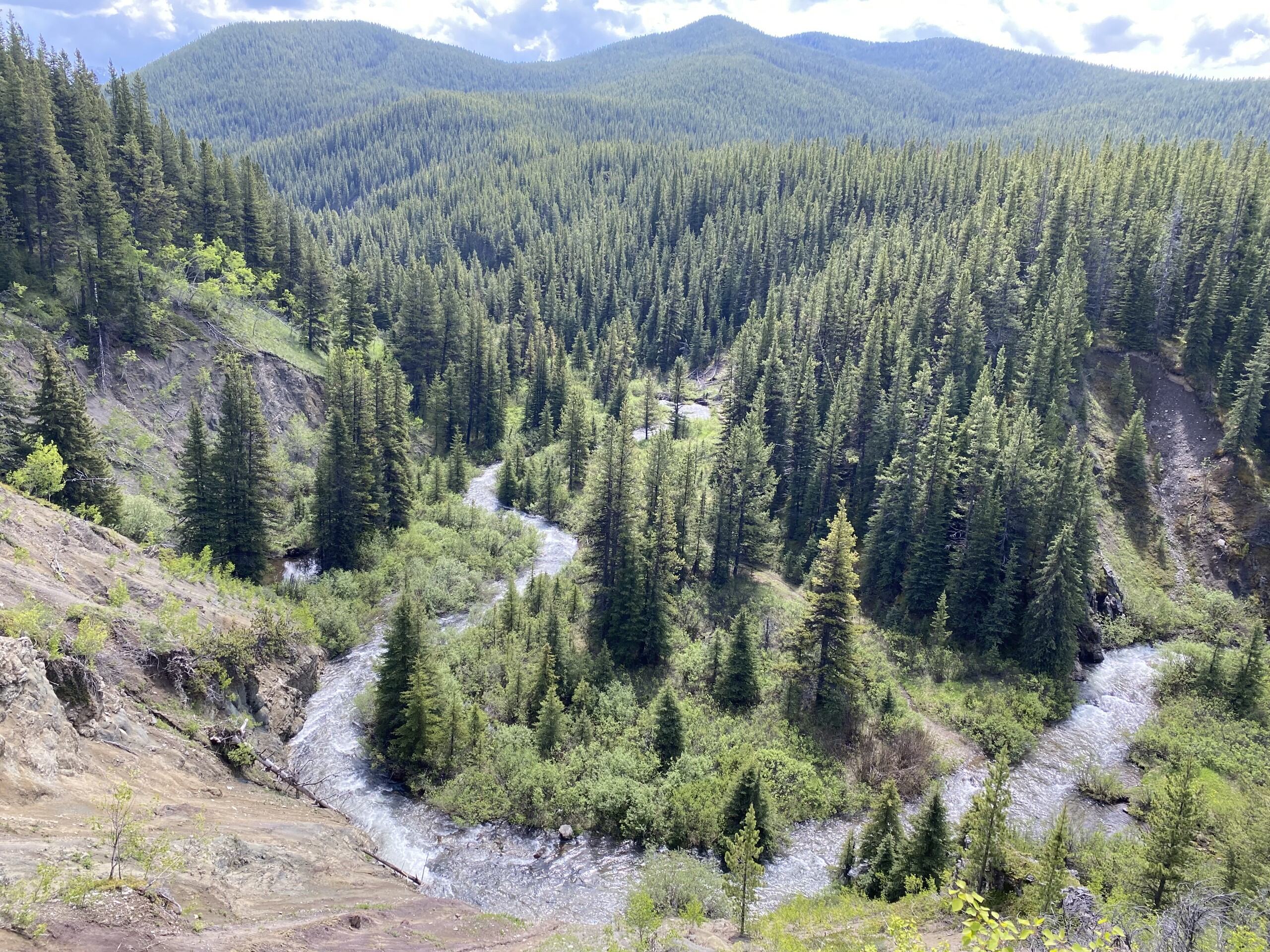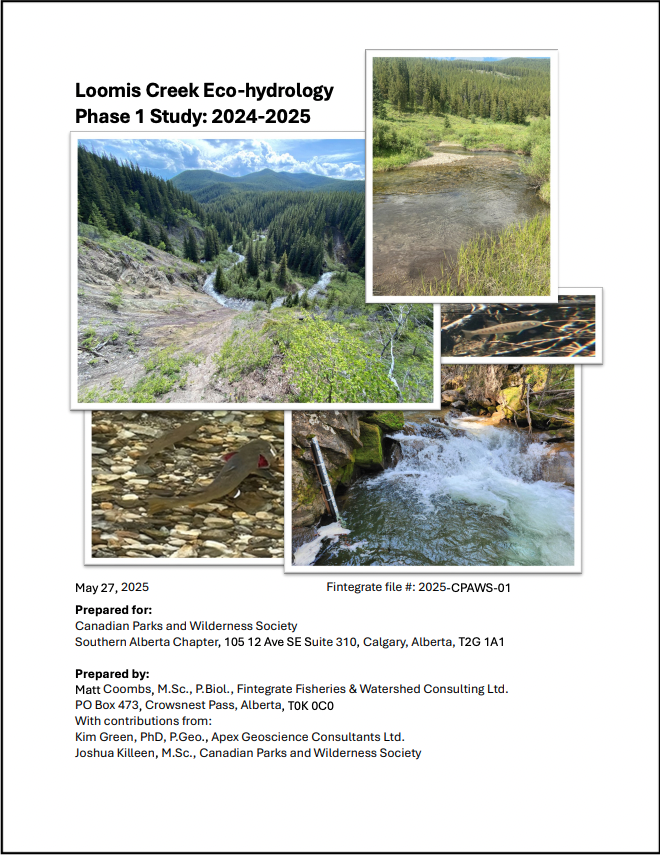Study Reveals Loomis Creek Bull Trout Population at High Risk from Proposed Logging Operations
June 5th, 2025
In 2023, CPAWS Southern Alberta became aware of West Fraser Cochrane’s clearcut logging plans in the Loomis Creek watershed and along the Highwood River in Kananaskis Country, Alberta. Public concerns about the plans mounted and over 6,800 people have written to the Alberta government in opposition.
The Highwood River and Loomis Creek are designated as critical habitat for bull trout under the Species at Risk Act (SARA). Bull trout need clean, cold, complex and connected habitat to maintain their populations. As an indicator species, the presence and health of bull trout reflect the overall integrity of a watershed.
To confirm the presence of bull trout in the Loomis Creek watershed, CPAWS commissioned an environmental DNA (eDNA) survey in 2023. Following this, CPAWS, supported by many generous donors, commissioned a detailed watershed and eco-hydrological field assessment to better understand bull trout distribution, spawning, and habitat in the Loomis Creek watershed – as well as the risks to these attributes from logging.
Today, we are releasing the results of this work.
Click below to access the full technical report, the Loomis Creek Eco-hydrology Phase 1 Study: 2024-2025:
We are also releasing a summary of the report:

The study has confirmed for the first time that Loomis Creek is occupied by a reproducing resident bull trout population, which is reliant on the habitat in this watershed.
The proposed logging plan for the area includes roads, watercourse crossings, and clearcuts in and around critical habitat. This includes roads and crossings directly upstream of the most sensitive spawning and rearing habitats where bull trout spawn, eggs incubate over the winter, and juveniles rear.
The study has identified the potential impacts of the planned logging on the Loomis Creek bull trout population and its habitat. These risks include direct harm from road mass wasting or crossing failures leading to sediment inputs, loss of riparian habitat, and hydrological changes that would impact in-stream habitat. The work makes clear the vulnerability of the Loomis Creek bull trout population, which is at risk of extirpation if logging plans move forward unchanged.
These findings also highlight a broader issue:
Currently, neither government nor the forestry sector are required to conduct the type of field-based assessment CPAWS has commissioned, even when there is designated SARA-listed critical habitat overlapping or downstream of a clearcut logging plan. To succeed in recovering threatened bull trout populations, government and the forestry sector must ensure that these types of detailed field assessments are conducted and acted upon whenever logging is proposed in a watershed with critical habitat. SARA must also be implemented and enforced in such a way as to prevent further losses and safeguard the future of these species.
We continue to call for the logging plans in this area to be stopped. As the report makes clear, “the logging plan represents a high risk to the sustainability of this population” and “With bull trout generation time typically being 7 years, the Loomis Creek population may not be able to persist through a prolonged reduction in habitat productivity“.
“The huge amount of work that has gone into this study has given us an understanding of both the importance, and the vulnerability, of the Loomis Creek bull trout population. Native trout habitat must be better protected, here, and across the region.”
—Josh killeen, Conservation Science and Program Manager, CPAWS Southern Alberta
More News

Critical Habitat and Industry Lobbying Part 4: How DFO Allows Critical Habitat Destruction

Our Take: The New Ministry Mandate Letters



